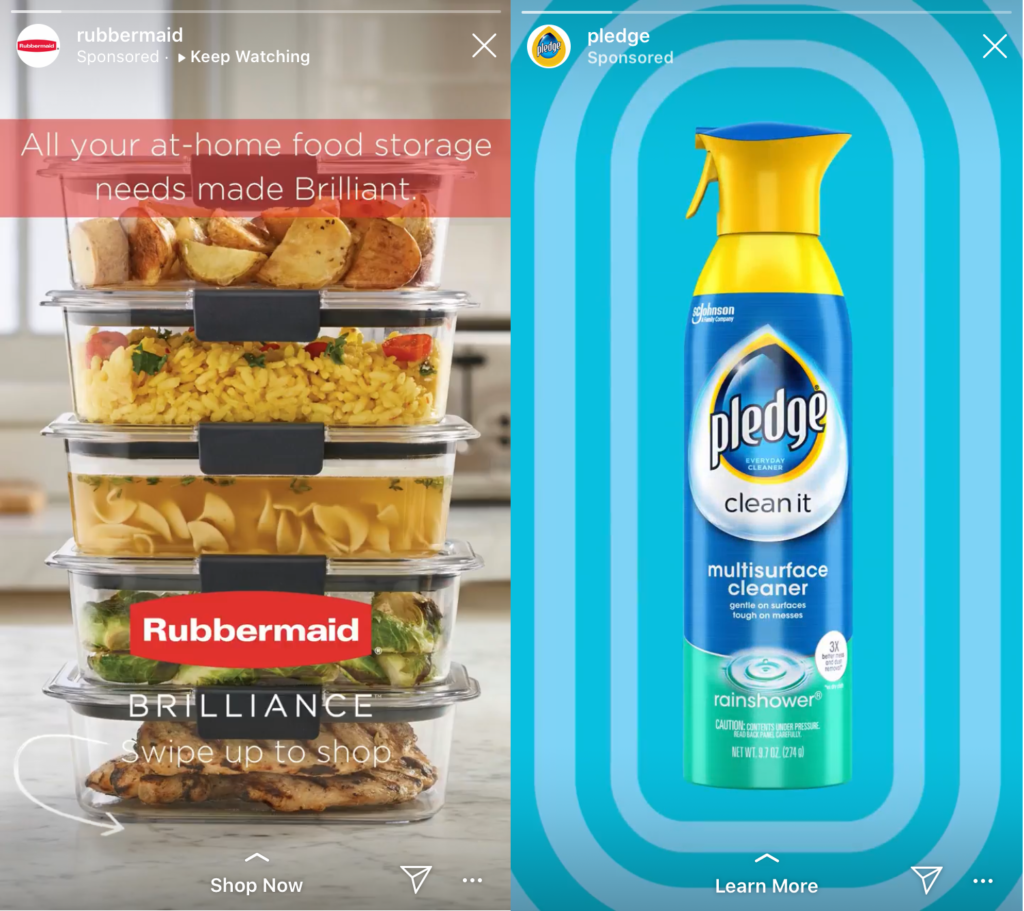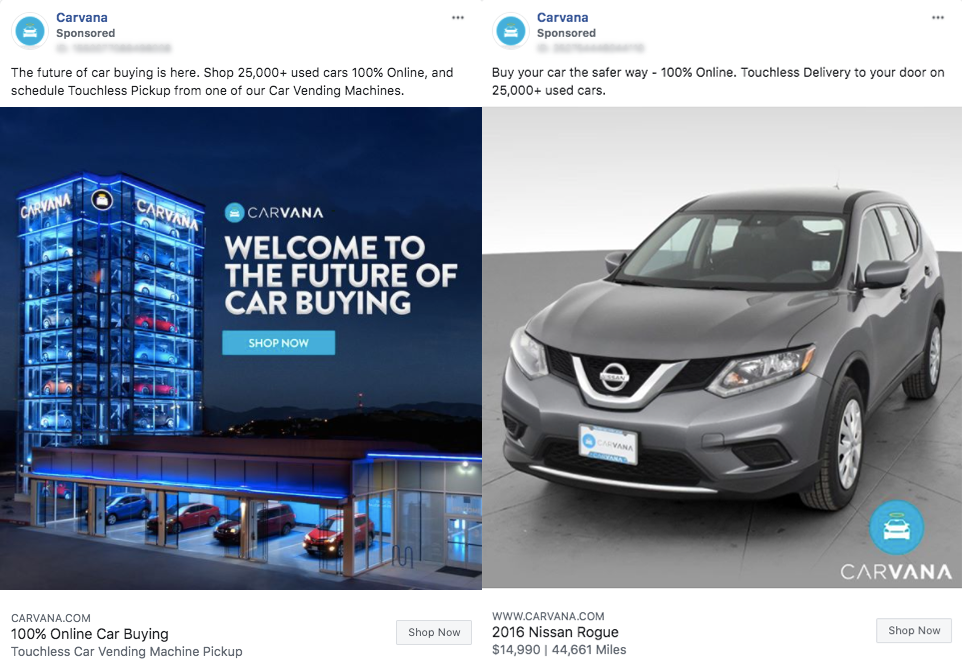So you’ve learned how to pivot your social strategy and you’ve done your reading on how the pandemic is changing the way we create content.
But what about ads?
By dissecting six major industries, the time has come to dive into the impacts, outlooks, and solutions to advertising in a post-pandemic world.
Let’s start with some insights on advertising in general.
As with most economic collapses, the first thing to go for most organizations was the marketing budget. According to Business Insider, 76 percent of companies plan to cut ad costs in 2020 and focus more money inward. While that may sound frugal and smart at first, not advertising will lead to lost sales and less revenue down the line, while companies that continue to advertise will weather the storm a bit better.
Solution? Keep advertising! Not only were costs driven to all-time lows, but consumer attention is at an all-time high. People have been forced to buy takeout and use e-commerce for months, and behaviors are now shifting and rewarding data-driven marketing campaigns. In times of crisis, people need to know where you stand and who to trust.
How did COVID-19 affect the retail industry?
Online retail is nothing new, but four months ago it wasn’t always the preferred method. There will always be people who like to see, touch, or try on products before a purchase, let alone those who like to argue their way into getting a discount. But with 58 percent of Americans purchasing more items online than in previous months, our time in isolation has forced even these people’s hands if they want to make certain purchases.
Looking forward in a post-pandemic society, companies are less likely to open underperforming stores, put a pause on new openings, and are likely to improve e-commerce efforts. Even with the go-ahead from the government to open shopping centers, fear of the virus will still inevitably keep foot traffic low and may even show a more steady trend in higher e-commerce rates moving forward. Industry professionals also suspect a more permanent shift toward online events, livestreams, and chats as a way to engage their audience. So what does all this tell us? The surge of changes this virus brought to retail is here to stay.
More cooking at home and more sanitizing? Better buy some new tupperware and cleaning supplies. (Source: screenshots via Instagram)
Advertising in this field means it’s more crucial now than ever to implement digital tracking to properly target your audience. Now that numbers are increasing online, your digital efforts need to correlate. And by integrating your new digital data with your customer and sales data you can learn, grow, and optimize your efforts to see the best results.
With content, follow the lead of your big name competitors! Emphasize your deliveries and returns, talk about contactless payment, and make your customers feel comfortable shopping by highlighting your brand’s evolutions.
Advertising and education is crucial… how are things changing?
Pivoting to those in education, a system that affects 90 percent of teachers and learners globally, schools moved to video sessions, both in lectures and in social settings to try to replicate the usual educational settings. Virtual tours, virtual lessons, and virtual socializing—but the problem arises in providing equal educations to those in low-income areas without access technology or wifi as well as private institutions aiming to recruit prospective students in a time when tours and interviews are hindered.
So what’s an advertiser to do? This is really the time to highlight tech abilities, virtual tours and offerings while emphasizing that quality isn’t compromised. It’s also important to follow the lead of the consumer by adapting to their trends and behaviors. And moving forward, make sure you use collected data and measuring results from the current months to inform future semesters.
Institutions need to look forward and read the room to hit the right tone.
How about live events?
As one of the most unfortunately affected industries during the pandemic, travel and live events are doing their best to engage their users and get some business where they can. The estimated economic impact is a staggering $2.1 trillion and Ticketmaster announced plans to refund tickets for as many as 18,000 events.
It’s significantly harder to predict where the industry will be in the coming months, but previous epidemics indicate that we can expect 14–25 months for places to recover. And those who feel comfortable going to live events will trickle in over the next few months at a slow pace.
Executed properly, pivoting to live events once again is the only way out for many businesses. Virtual races, concerts and conventions can ultimately save on costs and provide better value to sponsors. And when applicable, emphasizing contactless experiences helps comfort your audience.
With these virtual events, now’s the time to track, measure, and analyze all that amazing data! This will help drive all the new, innovative concepts into the future of live events. Let’s take a note from the creative minds at Kayak and switch things up in the midst of a contactless, vacationless world. (Editor’s note: The above video is from March 2018. Talk about being ahead of the game.)
What about big life purchases, like buying a car?
Speaking of live, in-person showcases, we can’t help but highlight the impact COVID-19 has had on the auto industry. Car sales were banned, showrooms shuttered, and used car sales plummeted in the wake of stay-at-home orders. Much to the dismay of local retailers, companies like Carvana and CarMax heavily advertised their cross-border, contactless sales models, which buoyed revenue and changed how the market thought about buying cars. Although retailers are beginning to see a rebound, they’ve been forced to take a hard look at how to adapt to rapid changes in consumer behavior.
Source: screenshots via Facebook
Just like with live events and education, virtual tours are now the standard for buying cars and showcasing real estate. Scheduling a tour or test drive was commonplace pre-pandemic, but emerging tech has capitalized on the digital-first experience. This May, Comcast’s TV advertising brand, Effectv, rolled out their digital auto showroom, highlighting top car manufacturers and allowing consumers to experience new vehicles on their TV just by speaking into their remote. This concept is sure to sweep all facets of professional service, especially when decisions don’t need to be made in person.
How can a company rebound and sell itself?
As bad as some businesses saw cuts, others, like Dominos and Pizza Hut added tens of thousands of jobs just to scale for demand. Companies like Nike and Planet Fitness waived subscription fees to incentivize users to stay active on their platforms, and emerging apps like Robinhood were forced to confront bandwidth issues when people flocked to buy stocks. Some say these are “good problems,” but scaling too quickly too soon can leave you high and dry when the rain stops falling.
To survive a burst of business, flatten your own growth curve by investing in your people first. Help offset the cost of a home office, invest in communication and collaboration tools to keep off-site workers constantly connected, and move your files to the cloud so work can be accessed from anywhere. Promoting your company as employee-first will always attract talent, and keeping it digital first with lots of transparency will retain that top talent.
Another investment to make will be in customer and lead management platforms, which will help you handle the rush when new business shifts from in-person to digital. Constantly evaluate your tech stack to make sure the tools you have are the tools to get the job done right. Once that’s buttoned up, advertise your differentiators and scale the smart way.
Last, have a plan in place for the next crisis. A pandemic may only come once in a generation, but it’s important to be ready and have actionable steps to secure yourself. As mentioned previously, nobody likes cutting budgets, and no one wants to go dark without a way to turn the lights back on.
What if I haven’t heard anything in weeks?
If you’re struggling to make contact with the outside world, it’s time to evolve and try new things. Digital marketing has come leaps and bounds since banner ads were introduced over a decade ago. Trimming your website to operate with a lean, mobile-first set up will help make it easy for customers to buy your product or service, but you’ll also need to understand customer journeys, conversion funnels and how to marry the two to make your advertising work well.
A good place to start for free is the Google Skillshop, which can teach you key marketing concepts to help your business grow. If you need support, consulting with a client-first agency like ChatterBlast can help you ease into the process and scale efficiently, making sure your dollars aren’t wasted on markups or services you don’t need.
So, what’s next?
Although the pandemic is far from over, there is light at the end of the tunnel. Across all industries, it’s more important than ever to continue marketing and advertising efforts in good taste. Be cautious of what’s going on in the world, and position your brand to lead and be responsible.
Some big takeaways are to adapt, overcome and grow with changes. In-person dining was halted, but restaurants that had the ability to shift to takeout were able to mitigate disaster. Owning your story is also crucial, since your brand is unique and can solve problems like no other brand can.
Finally, measure everything. When every penny counts, you need to know how much it costs to make business, retain business, and complete business in a crisis. Armed with this information, you’ll be ready for whatever comes next.





